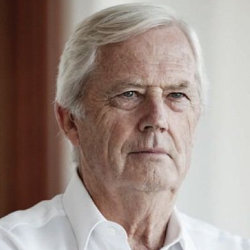How a transition to renewable power in SA also transited a change of government.
Fifteen years ago South Australia relied on burning brown coal and importing coal and gas fired power from Victoria. Today it is producing over 50% of its power from wind and solar and is well on the path to being a major green energy exporter.
On Wednesday September 28, 2016 a one-in-50-year storm smashed down 22 high voltage power lines near Port Augusta triggering a set of safety switches designed to protect the national grid – and plunging the entire state of South Australia into a blackout. Following a second blackout in SA in early 2017, Premier Weatherill released Our Energy Plan. The focus was on reducing the state’s dependence on imported coal -fired power from Victoria by building local generating capacity including renewables and ga, augmented by battery storage.
At the time Barnaby Joyce and friends cited SA’s high proportion of renewables as the cause of the blackouts. Subsequent reports dismissed this claim, but in the months that followed and in the lead up to the March 2018 state election the Liberal opposition under Steven Marshall were aggressively dismissal of the Weatherill government’s ambitious renewables agenda.
Marshall had previously attacked Labor for closure of the coal-fired Port Augusta power station in 2016. In early 2017 Marshall pledged to scrap Labor’s target of 50% renewables power by 2025 and replace it with a reduced one under the federal National Energy Guarantee (the NEG).https://www.abc.net.au/news/2017-02-13/sa-liberals-pledge-to-scrap-renewable-target/8264704 The opposition went to the 2018 election with promises that appeared set to reverse the path set by 16 years of Labor’s commitments: First under Rann with wind power and then under Weatherill with solar and battery storage. Meanwhile, SA’s renewables sector had become the strongest in the country.
Steven Marshall promised to remove the state renewable energy target and to contribute $200M towards building a new interconnector with NSW, arguing that access to imported power was the best way to assure reliability of supply. He committed to replacing Labor’s proposal for a virtual power plant connecting 50,000 public housing battery storage systems with a $100M plan to subsidise the installation of 40,000 solar and home battery storage systems.
However, while the rhetoric may have warmed the hearts of climate change deniers and fossil fuel advocates, the reality was somewhat different. Within 6 months of Marshall winning government in SA, Turnbull was forced to scrap the NEG. In any case, the SA 50% target for 2025 was achieved and surpassed in 2017. Much of the very considerable investment in further renewable infrastructure was locked in. The Guardian quoted energy analyst Hugh Saddler saying that renewables projects already in development would take the state up to 75%. https://www.theguardian.com/australia-news/2018/mar/20/does-a-new-government-in-south-australia-spell-doom-for-renewables
During the Rann and Weatherill governments SA moved quickly to use the national legislated renewable energy target (RET) to its particular advantage. Although the national RET was initially only 2%, for a small state like SA it represented half it’s electricity production. In 2009 it was raised to a target of 20% by 2020, thus accounting for over double the state’s production. Other states did not move to take advantage of the RET, possibly because many had significant coal-fired generation and coal mining interests which were not keen to see major investments in renewables. SA’s only coal mine at Leigh Creek closed in November 2015 followed by the closure of the power stations its served at Port Augusta. There was no corresponding coal lobby to discourage the state government from promoting renewables and by 2011 SA had become the first state to legislate planning support for windfarm development.
In addition, as McGreevy and the team at the Southgate Instituute at Flinders University have pointed out in a forthcoming article, SA has just been just plain lucky in terms of renewable resources. The state is well endowed with opportunities for onshore and offshore wind as well as large scale solar. Fortunately, many of the optimal sites for onshore wind are both near major high voltage transmission lines and away from major population centres.
The cost of electricity to consumers was, and continues to be a hot political issue in SA. From 2007 to 2014 the CPI for electricity in SA increased at double the rate of wages and general CPI growth. Liberal politicians have blamed Labor governments for closing down coal generation, implying that the expansions of renewables is both more costly and less reliable. However the real driver has been an increased reliance on natural gas at a time when the gas price soared. The Victoria Centre for Energy Policy reported that for SA the much lower cost of power from wind and solar in fact partially offset the impact of the gas price rises.https://www.afr.com/politics/gas-not-renewables-to-blame-for-sa-power-price-surge-20181205-h18sa4
As the proportion of renewables in the mix increased relative to gas, the wholesale price of electricity began to drop. By October 2019 SA had the cheapest wholesale power in Australia. SA’s Department of Energy and Mining reported in October 2019 that the state had 2,138 MW of wind and solar in service or under construction but had a further 6,157MW under development, or around $20-25B in the pipeline. https://reneweconomy.com.au/south-australias-stunning-renewable-energy-transition-and-what-comes-next-79597/
The Climate Council was able to report in late 2019 that SA is leading the nation in the transition to renewable energy. SA is on track to exceed its 100% renewables target by 2030. 100%https://thenewdaily.com.au/news/national/2019/11/25/renewable-energy-winners/ In 2004 SA imported around 30% of its power. By 2020 it had become a net exporter of power.
When the state Liberals were campaigning in the 2018 election Steven Marshall argued that a new 800MW interconnector with NSW was essential to provided reliable imported power to SA. In 2020 he has upped his commitment, but the argument now is more about the opportunities for export of SA renewable generated power. Part of the opportunity relates to the time difference with SA solar able to continue to provide power at peak evening demand time on the east coast. The $1.5 billion electricity interconnector was approved by the Australian Energy Regulator in January 2020.
Mc Greevy et al at the Southgate Institute provide a comprehensive analysis of the SA transition process. They offer some key lessons for a national transition that emerge from the SA experience. Central among these is the fact that once there is a favourable political environment and a critical mass of renewables exist or are planned, a momentum is developed and a path dependence established that is very resistant to political reversal. They note that the federal government could create that favourable political environment via raising the RET, imposing emissions pricing, allowing older fossil fuel plants to close, legislating for regulations to encourage renewables and building more interconnectors. It seems unlikely that the current government will take that path given the apparent power of forces within the National Party closely linked to fossil fuel corporate interests.
Paul Laris is a semi-retired health and human services policy tragic, health care users advocate, medical regulator, community activist, gardener and sailor.




